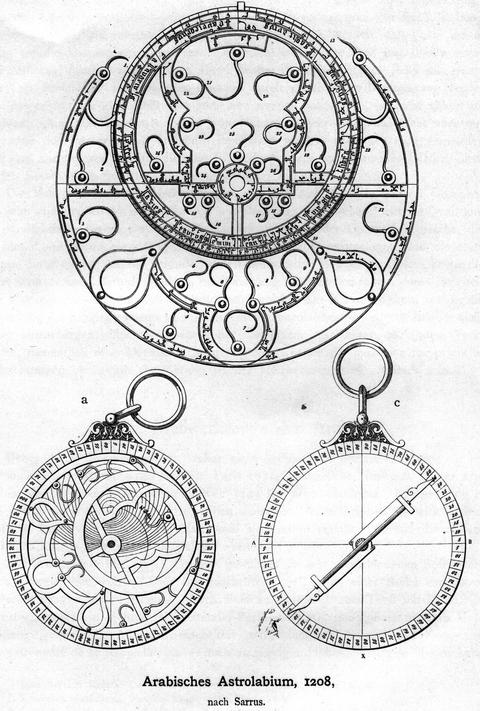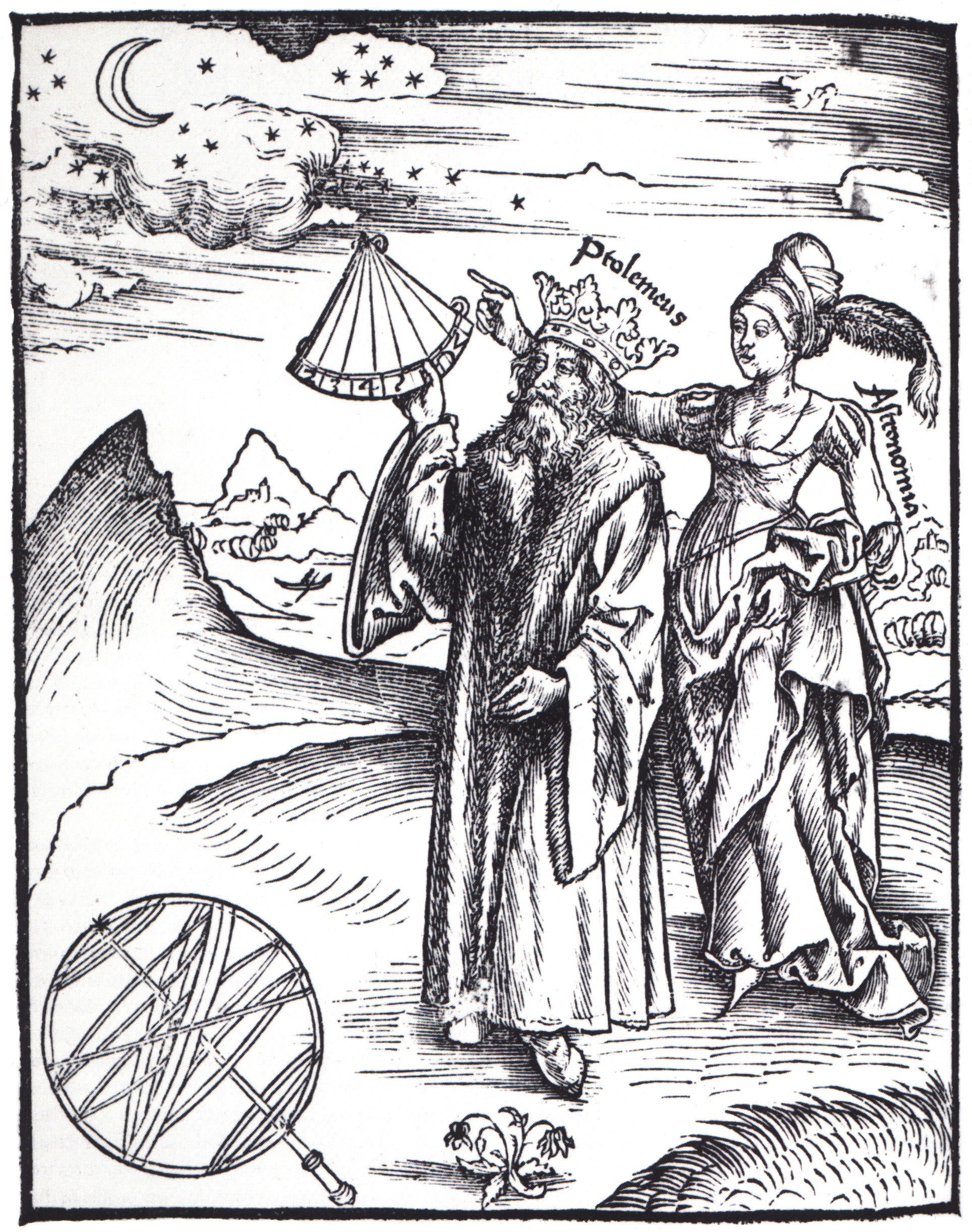Passion of the people – 1.1.8
Middle Ages belief in the power of stars
In the medieval world, from about 500 to 1500, astronomy was a required field of study. Universities across Europe organized their courses and bookshelves around the seven liberal arts: grammar, rhetoric, logic, music, geometry, arithmetic, and astronomy. In the centuries of the migration of people, Central and Western Europe had largely lost contact with ancient Greco-Roman cultural knowledge. Only in the Greek-speaking Byzantine Empire did ancient astronomical literature remain accessible and studied. In the Latin-speaking West, on the other hand, very little of this tradition was available until the 12th century.
From London to Baghdad and beyond, students of medicine, philosophy, and even theology carefully observed the astrological relationship between the 12 signs of the zodiac and one’s physical, mental, and spiritual well-being. Indeed, peoples of many religions believed that the radiant sun, full moon, twinkling stars, and distant planets held great power over their lives, the seasons, and daily activities. Stargazing influenced everyday decisions in the Middle Ages.
The work of astronomers in the Middle Ages consisted mainly of the transmission, translation and improvement of ancient astronomical writings. Western European scholars adopted the astronomical theories of Ptolemy from the Arabs. Ptolemy had taught that the earth was a sphere in the centre of the world and that the sun and all the stars orbited it.
Islamic astronomers were the leaders in this field. The leading Islamic scientists were often also court astronomers or court mathematicians. The Arab achievements were mainly in the field of astrometry:
- Accurate observations of the sky – also for astrological purposes, although Islam disliked the attempted look into the future and did not permit astrology
- Creation of star catalogues, naming of bright stars (still in use today)
- Further development of the astrolabe etc., precise measurement of the ecliptic slant.
The medieval scholars adopted from the Arabs the teaching that the planets influenced the fate of human beings through their position in the sky. They tried to predict the future from the position of the planets. This fortune-telling developed into an entire system that came to be called “astrology”. However, major innovations were largely absent at this time.


Further resources
Links below will redirect you to external websites. In accordance with the European data protection declarations, we would like to point out that by clicking on these links you may send data to external providers. We cannot prevent that.
Images
![]() Chart showing signs of the zodiac and the solar system with the world at centre (Andreas Cellarius Harmonia Macrocosmica, 1660/61)
Chart showing signs of the zodiac and the solar system with the world at centre (Andreas Cellarius Harmonia Macrocosmica, 1660/61)
Videos
![]() Astronomers From The Medieval Islamic World (History videos)
Astronomers From The Medieval Islamic World (History videos)
![]() Islamic Contributions to Astronomy and Navigation
Islamic Contributions to Astronomy and Navigation
![]() Astrology in the early Islamicate World
Astrology in the early Islamicate World
![]() Ancient Astronomy to the Middle Ages
Ancient Astronomy to the Middle Ages
On line resources
![]() Written in the Stars: Astronomy and Astrology in Medieval Manuscripts (a blog post about how faith, science, and stargazing influenced everyday decisions in the Middle Ages)
Written in the Stars: Astronomy and Astrology in Medieval Manuscripts (a blog post about how faith, science, and stargazing influenced everyday decisions in the Middle Ages)
![]() Medieval astrology guide about the ancient practice of astrology
Medieval astrology guide about the ancient practice of astrology
![]() Astronomical Instruments in the Middle Ages: More than just a timepiece
Astronomical Instruments in the Middle Ages: More than just a timepiece
![]() Astronomical Knowledge in the Sacred Architecture of the Middle Ages in Italy (Manuela Incerti)
Astronomical Knowledge in the Sacred Architecture of the Middle Ages in Italy (Manuela Incerti)
![]() The Idea of the ‘Dark Ages’ Is a Myth. Here’s Why Medieval Scientific Progress Still Matters
The Idea of the ‘Dark Ages’ Is a Myth. Here’s Why Medieval Scientific Progress Still Matters
![]() Astrology and Medicine in Medieval Times
Astrology and Medicine in Medieval Times
![]() Astrolabes in Medieval Jewish Culture (a project by Warburg Institute and Oxford University)
Astrolabes in Medieval Jewish Culture (a project by Warburg Institute and Oxford University)
Further readings
![]() Astrology and Medicine in Later Medieval England. The Calendars of John Somer and Nicholas of Lynn (Paper by Cornelius O’Boile)
Astrology and Medicine in Later Medieval England. The Calendars of John Somer and Nicholas of Lynn (Paper by Cornelius O’Boile)
![]() Astronomy and Astrology in the Medieval Islamic World (Edward. S. Kennedy. 1998)
Astronomy and Astrology in the Medieval Islamic World (Edward. S. Kennedy. 1998)
![]() Early-Medieval Cosmology, Astronomy, and Mathematics (in: The Cambridge History of Science)
Early-Medieval Cosmology, Astronomy, and Mathematics (in: The Cambridge History of Science)
Teaching Material
![]() Course on Cultural Astronomy and Astrology (University of Wales)
Course on Cultural Astronomy and Astrology (University of Wales)
![]() Medieval Astronomy in the Middle Ages
Medieval Astronomy in the Middle Ages
![]() How to read a medieval astronomical calendar (by Seb Falk)
How to read a medieval astronomical calendar (by Seb Falk)
For Kids
![]() A tutorial for secondary school pupils aged from 15 years up
A tutorial for secondary school pupils aged from 15 years up
 Astronomiedidaktik, Unterrichtsmaterial
Astronomiedidaktik, Unterrichtsmaterial
![]() A tutorial for secondary school pupils aged from 15 years up
A tutorial for secondary school pupils aged from 15 years up
